Archive for Mulching
The Foundation of Flourishing Gardens: Understanding Soil Health

Welcome to another insightful post from DK Landscaping, where we dive into the essentials of creating and maintaining vibrant gardens. Today, we’re focusing on a critical, yet often overlooked, aspect of landscaping: soil health. Understanding and nurturing the soil is the first step towards a flourishing garden. Let’s explore why soil health is foundational and how you can enhance it for a thriving outdoor space.
The Vital Role of Healthy Soil
Soil is not just dirt. It’s a living, breathing entity that plays a crucial role in supporting plant life. Healthy soil fosters a rich ecosystem of bacteria, fungi, worms, and other organisms that work together to break down organic matter, enriching the soil and providing essential nutrients to plants.
Nutrient Availability and Soil Health
Plants rely on soil for water, oxygen, and nutrients. Healthy soil has the right balance of minerals and organic matter, which releases nutrients in a form that plants can absorb. Understanding the nutrient content of your soil is key to identifying which amendments might be needed to support your garden.
Water Retention and Drainage
The structure of healthy soil allows it to effectively retain moisture, providing plants with a consistent water supply. It also ensures proper drainage, preventing waterlogged roots which can lead to plant diseases. Balancing moisture retention with adequate drainage is a hallmark of soil health.
Enhancing Your Soil Health
Testing Your Soil
The first step in improving soil health is understanding its current condition. Soil tests reveal pH levels, nutrient deficiencies, and organic matter content, guiding your amendment choices.
Organic Matter and Composting
Adding organic matter is one of the best ways to enhance soil health. Compost improves soil structure, nutrient content, and microbial activity, supporting vibrant plant growth.
Mulching: A Dual Purpose Ally
Mulching conserves moisture, suppresses weeds, and as it decomposes, adds organic matter back into the soil, improving its health and fertility.
Natural Fertilizers and Amendments
Choosing the right fertilizers and soil amendments is crucial. Organic options like bone meal, blood meal, and green manure can provide necessary nutrients without harming soil organisms.
Embracing Crop Rotation and Cover Crops
In larger garden spaces, rotating crops and using cover crops can significantly improve soil health by preventing nutrient depletion and enhancing soil structure.
The Impact of Soil Health on Garden Success
Healthy soil is the bedrock of a flourishing garden. It supports plant health, aids in disease resistance, and contributes to the overall beauty and productivity of your landscaping efforts.
By investing time and resources into understanding and improving soil health, you’re laying the groundwork for a garden that not only grows but thrives.
At DK Landscaping, we believe that a deep understanding of soil health is essential for any successful landscaping project. By focusing on the foundation beneath our feet, we can create lush, vibrant gardens that are a testament to the power of healthy soil.
Remember, every great garden starts with great soil. Let’s make your garden flourish together.
Water-Saving Tips for Your Garden
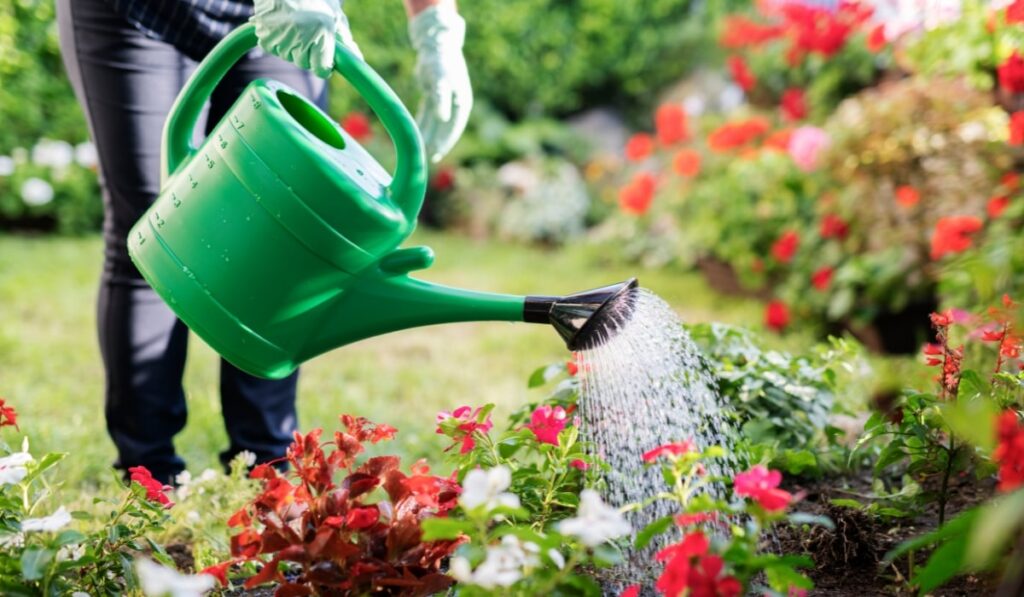
Gardening is a great way to beautify your home while also providing fresh produce. However, it can also be a significant source of water consumption. With water becoming an increasingly scarce resource, it’s important to find ways to conserve it. Water-saving tips for your garden can help you save water and reduce your water bill.
There are many ways to save water in your garden. One of the easiest ways is to choose plants that are well-suited to your climate and soil type. These plants will require less water and maintenance, saving you time and money. Another way to save water is to use mulch around your plants. Mulch helps to retain moisture in the soil, reducing the need for frequent watering.
In addition to these tips, there are many other water-saving techniques that you can use in your garden. From using drip irrigation systems to collecting rainwater, there are many ways to conserve water while still maintaining a beautiful garden. By implementing these tips and techniques, you can reduce your water consumption and help to protect this valuable resource.
Efficient Watering Practices
Understanding Soil and Plant Needs
One of the most important things to consider when it comes to efficient watering practices is understanding the soil and plant needs. Different types of soil have different moisture retention properties, which means that some soils will require more water than others. For example, clay soil tends to hold onto water for longer periods of time than sandy soil, which means that plants growing in clay soil will require less frequent watering.
Additionally, it’s important to consider the type of plants that are being grown in the garden. Native plants and drought-tolerant plants are great options for conserving water in the garden, as they are adapted to the local climate and require less water to thrive. On the other hand, plants that are not well-suited to the local climate will require more water to stay healthy.
Watering Techniques and Scheduling
Another important aspect of efficient watering practices is using the right watering techniques and scheduling. For example, morning watering is generally recommended as it allows plants to absorb moisture before the heat of the day causes evaporation. Deep watering is also important, as it encourages plants to develop deep root systems that can better withstand dry spells.
It’s also important to consider the timing and frequency of watering. Overwatering can lead to fungal diseases and runoff, which can be harmful to the environment. Gardeners should aim to water their plants only when necessary, and to avoid watering during periods of rain or high humidity.
Irrigation System Efficiency
For those who use an irrigation system, it’s important to ensure that the system is as efficient as possible. This can be achieved by using water-efficient emitters, installing a rain-shutoff device, and regularly checking and maintaining the system. Irrigation system controllers can also be used to schedule watering times and ensure that water is not wasted.
In addition to these tips, gardeners can also consider using rain barrels or other rainwater harvesting systems to save water in the garden. Mulching and composting can also help to conserve water and improve soil moisture retention. By following these water-saving tips and using efficient watering practices, gardeners can help to promote sustainability and conserve water in their gardens.
Sustainable Garden Design and Maintenance
Choosing the Right Plants
Choosing the right plants for a sustainable garden is crucial. Native plants, drought-tolerant plants, succulents, and perennials are great options for water-saving gardens. These plants require less water, are adapted to the local climate, and are more resistant to pests and diseases. Yucca and verbena are examples of beautiful and low-water-use plants that can thrive in a water-saving garden.
Mulching and Ground Cover
Mulching is an effective way to reduce water usage in the garden. Organic mulch such as lawn clippings, leaves, and compost can help retain moisture in the soil, prevent weed growth, and improve soil health. Ground cover plants such as creeping thyme, clover, or sedum also help to retain moisture and reduce erosion.

Alternative Water Sources and Collection
Using alternative water sources can be a game-changer for water-saving gardens. Rainwater harvesting is a great way to collect water for the garden. Installing a rain barrel or water tank can help to store and use rainwater for irrigation. Ollas are also a great way to save water. These clay pots are buried in the soil and slowly release water to the roots of the plants, reducing water waste and promoting plant growth.
By implementing sustainable garden design and maintenance practices such as choosing the right plants, mulching and ground cover, and using alternative water sources, gardeners can create beautiful and thriving gardens while conserving water and promoting sustainability.
Frequently Asked Questions
What are effective methods for reducing water usage in your garden?
There are several effective methods for reducing water usage in your garden. One of the most effective ways is to choose plants that are native to your region and are adapted to the local climate. These plants will require less water and maintenance compared to non-native plants. Additionally, using mulch around the plants can help retain moisture in the soil, reducing the need for frequent watering.
How can you conserve water when maintaining a vegetable garden?
To conserve water when maintaining a vegetable garden, it is important to water the plants deeply but less frequently. This encourages the roots to grow deeper and access water from lower layers of soil. Additionally, using drip irrigation or a soaker hose can help deliver water directly to the roots, reducing water waste. Using a rain barrel to collect rainwater can also provide a free source of water for your garden.
What are the benefits of watering plants early in the morning for water conservation?
Watering plants early in the morning is beneficial for water conservation because the cooler temperatures and lower wind speeds help reduce evaporation. Additionally, watering in the morning allows the plants to absorb the water before the heat of the day, reducing the risk of water stress.
What personal habit changes can lead to significant water savings in garden care?
Personal habit changes that can lead to significant water savings in garden care include using a broom instead of a hose to clean patios and driveways, fixing leaks in hoses and sprinklers, and using a bucket instead of a hose to wash cars. Additionally, reducing the frequency of lawn watering and using drought-tolerant plants can help save water.
How can you utilize greywater from showers and baths for gardening purposes?
Greywater from showers and baths can be utilized for gardening purposes by diverting the water to a holding tank or directly into the garden. However, it is important to use biodegradable and non-toxic soaps and detergents to avoid harming the plants. It is also recommended to use greywater for non-edible plants only.
What are the most efficient irrigation techniques for minimizing water waste in gardens?
The most efficient irrigation techniques for minimizing water waste in gardens include drip irrigation, soaker hoses, and micro-sprinklers. These methods deliver water directly to the roots of the plants, reducing water waste due to evaporation and runoff. Additionally, using a rain sensor or a smart irrigation controller can help adjust watering schedules based on weather conditions, further reducing water waste.
Protect Gardens In Winter By Mulching
Winter is just around the corner and its important to protect your garden from the most unbearable conditions. You want to do all you can to prepare and offer protection for when that time arrives. How do you protect gardens from the snow and ice? The answer is easy, mulching. In preparation for winter this practice is an excellent way to protect your plants during this cold period.
Mulching Helps Plants To Stay Warm In Cold Conditions
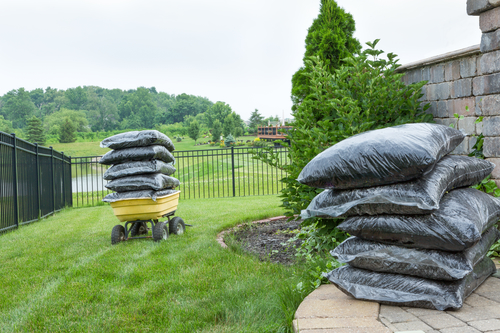
A responsible gardener would ensure that they mulch their plants as a preventative maintenance measure. Generally mulching plants in extremely cold conditions helps to provide an effective type of insulation that prevents them from freezing and thawing rapidly. It also serves to prevent plants from becoming shallow-rooted plants and bulbs caused when plants are lifting out of the soil which can damage delicate grafts.
If you experience brutal winters or nighttime temperatures below 20 F. (-8 C.) mulching plants in your garden may be the smartest decision.
Effective Winter Mulching Tips
Mulching is a great way to keep your plants active throughout the winter season and prevents them from becoming dormant. For instance if active plants that aren’t mulched decide to put out new growth at this time there’s a possibility that plant tissues can become damaged by nighttime frost. This can create entry points for many dangerous fungal and bacterial pathogens that are capable of causing serious harm to plants. In a nutshell mulching provides adequate protection to plants ensuring they bloom free of pests.
Gardeners can make use of a variety of organic materials suitable for winter protection including hardwood bark, straw, chopped corn cobs, grass clippings and pine needles. Nevertheless be sure to keep mulch at least one inch away from crowns and stems when making applications to prevent choking, damage or rot.
Gardeners should also take care to remember that organic mulches carry a low nitrogen content therefore before laying mulch you should first fertilize soil with a high-nitrogen product such as blood meal or fish meal to increase nitrogen levels in the soil.
Need Help With Winter Mulching? Dk Landscaping Inc. Is Here To Help
If you don’t know what to do or need help with your winter mulching don’t hesitate to give us a call at DK Landscaping Inc. at: (707) 280-3632 we’d be happy to come and give you a hand.
Here at DK Landscaping we strive to offer the highest quality landscaping and gardening services in Northern California.. Give us a call today or you can contact us online for more information on how you can take better care of your garden.
How Mulching Can Benefit Your Garden
In seeking to maintain or improve the growth and health of trees, plants and flowers in gardens there are several practical, techniques that gardeners can apply. One approach that has proven to be very effective in helping to promote the health of gardens is mulching.
Mulching can be used for Multiple Purposes
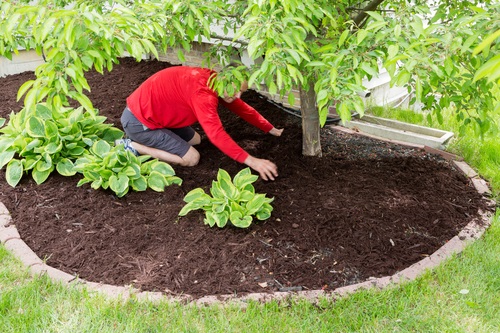
Mulching refers to the practice of applying a layer of material to the surface of soil. Mainly it is used to improve soil health and fertility, retain soil moisture and reduce weed growth. Mulching can be utilized in several different, areas including vegetable gardens, flower beds and surrounding landscapes. It is so effective that it allows gardeners to spend less time plucking up weeds, watering gardens and fighting pests.
Apart from its main uses mulch can also be used to lend additional support to plants by helping to stabilize them as well as help to enhance the visual appeal of gardens.
Types of Mulch Gardeners can Utilize when Mulching
When mulching gardens there are two basic kinds of mulch that gardeners can use these are organic or inorganic mulches. Generally organic mulches consist of numerous materials including straw, grass clippings, chopped leaves, shredded bark, wood chips and sawdust and inorganic mulches are mainly comprised of gravel, stones, geotextiles and black plastic.
Nevertheless both types of mulch can be used to deter weed growth and improve soil quality however with organic mulches soil is improved gradually as the organic material decomposes while inorganic mulches don’t.
Important Tips to Consider
If mulching to combat weeds there are a few things that people should keep in mind if it is to be done properly and effectively. Firstly it is recommended that mulch be laid down over soil that has already been weeded and secondly it should be laid down thick enough to discourage the reappearance of new weeds.
Considering this the thickness of mulch placed over soil should range around 4- 6 inches though a 2- 3 inch layer normally suffices in areas that have more shade and weed growth is not as prevalent.
Another very essential tip gardeners can utilize when mulching is the addition of nitrogen products to soil. Products like blood meal or fish meal can be used and should be applied before the mulch is laid as organic mulches usually have a low nitrogen content and this can help to increase nitrogen levels in soil so that plants get the desired nutrients.
Nevertheless one of the most important things that gardeners should take care to remember when mulching is how they place the mulch. When laying down mulch it should be kept no less than an inch away from crowns and stems of plants. This is mainly because wet mulch resting against the stems of flowers and vegetables can cause rot. Therefore it would be wise to ensure that mulch is placed at the appropriate distance to prevent this from happening.
Need Help with Mulching Your Garden?
If you don’t know what to do or need help mulching a large garden area don’t hesitate to give us a call at DK Landscaping Inc. at: (707) 280-3632 we’d be happy to come and give you a hand.
Our services are prompt and professional and our prices affordable. Here at DK Landscaping we strive to offer the highest quality landscaping services to clients so give us a call today or you can check out our website: dklandscaping.com to have a look at the services we offer.
Landscape Irrigation: Best Practices and Tips
Mother Nature provides water for plants to help them grow. However, rainfall may not always be enough to maintain a healthy landscape and eye-catching beauty. That’s where irrigation comes in.
When done properly (preferably by a landscape expert), irrigation helps plants thrive when natural sources can’t satisfy your landscape’s water needs. To give you insights into the best watering techniques, we walk you through the following:
- Proper irrigation practices
- Water-saving irrigation techniques
- The ideal time to water your yards for the best results
If you don’t have the time to deal with irrigation equipment or implement best practices, a landscape maintenance company can do the heavy lifting. That said, understand what irrigation is and why it is essential in maintaining landscape beauty.
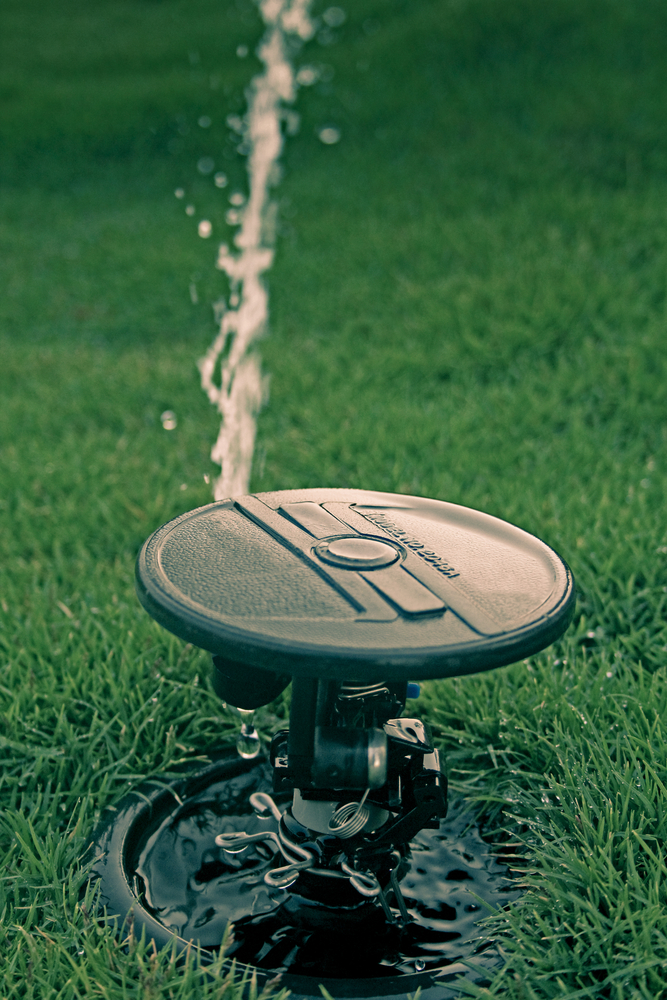
What Is Irrigation? (And Why It’s Important)
Relying on rainfall alone as your plants’ water source may not be enough during hot seasons or in areas with sparse or seasonal precipitation. In that case, watering your yards or gardens using pipes, sprinklers, or other artificial methods helps improve plant growth and quality.
Irrigation keeps your outdoor space looking pristine and green. When done properly (like with an expert), it can prevent patches in your landscape commonly caused by insufficient water. That said, you only enjoy the benefits of irrigation if you implement the right practices.
Top 3 Landscape Irrigation Tips
Here are some of the best practices when implementing landscape irrigation:
1. Leverage Mulching When Watering Specific Landscape Areas
Mulching means covering the soil surface around plants with an organic or synthetic substance to help conserve moisture by reducing evaporation after irrigation. You can buy mulch on Amazon and use it to preserve moisture when watering landscape trees, annuals, perennials, or woody plants.
When mulching is a water-saving technique, it’s important to do it right. Your mulch should not touch the stem of the plants or the trunks of landscaping trees, an improper practice called volcano mulching. Ensure the mulch is only covering the roots. That way, you prevent wet conditions on plant stems that can cause diseases.
2. Consider Drip Irrigation to Save Water
Drip irrigation is a watering method that uses a system attached to a water source and its components arranged throughout your landscape. Because it supplies water directly to plant roots, drip irrigation prevents water loss from run-off, evaporation, and overwatering. For this reason, a well-installed drip system can use up to 50% less water than conventional sprinklers.
3. Take Advantage of Regular Landscape Maintenance
Routine system checkups ensure your irrigation equipment is working correctly. Regular assessment helps identify and fix water-wasting problems before they impact your water bill.
Consider hiring a landscape maintenance company to inspect your systems at least yearly, especially at the beginning of the irrigation season. The company will check whether your irrigation system works efficiently and adjust features accordingly. The professional can also repair leaks and other system problems to save water.
However, not all landscaping companies are the same. Compare your options and choose one that is experienced and has an excellent track record. How long they’ve been in the industry, and online reviews should tell you who to hire.
Bonus Tip
Another way to save irrigation water is to use native plants. These plants are well adapted to the local climate and soil conditions. Therefore, they can thrive in their original environment.
For this reason, they require much less watering than foreign species because they can easily survive with the water supplied naturally by Mother Nature in their native environment. For instance, many native Midwestern plants in the US have deep root systems, which increase the soil’s capacity to store water.
What’s the Ideal Time of Day to Water Your Garden or Yard?
Irrigate in the morning, especially if you use overhead irrigation methods like sprinklers. Because leaf wetness increases the risk of plant diseases, irrigating in the morning gives plants enough time to dry during the day. Additionally, morning is the best time to irrigate because it allows water to sip into the soil—irrigating in mid-day heat when the high evaporation rate results in a lot of moisture escaping into the atmosphere.
Reliable Landscape Irrigation Services
Although it is possible to design a landscape that depends solely on rainfall, irrigation is sometimes necessary to maintain landscape health and aesthetic beauty. It supplies water to plants when needed most to ensure they thrive, even during seasons with much heat and little-to-no rain.
That said, proper landscape irrigation requires skills and enough time investment to get it right. If you don’t have time to implement irrigation best practices or just want to avoid guesswork, it’s best to hire a landscaping professional.
The professionals ensure your irrigation system is installed and functioning correctly. It can also be a way to identify water-saving opportunities in landscape irrigation. We specialize in water-saving landscape design (xeriscape), maintenance, repair, and irrigation. Contact us today to schedule an appointment.
6 Lawn Treatment Tips From The Experts
You’ve created the perfect lawn in your outdoor space. The soil is fertile, and the grass is ideal for your area. But to keep your lawn in peak condition, it needs regular care. The following are six lawn treatment tips recommended by landscaping experts.
- Mowing
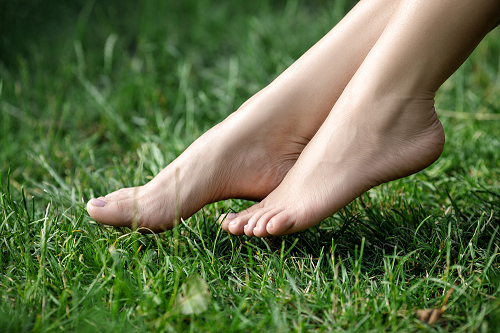
What’s the perfect length for lawn grass? That depends on your preference. However, for easy maintenance, you should not allow the grass to grow more than 10 cm.
Experts recommend trimming only one-third of the grass’s length. Cutting the grass too short increases the chances of drying, weed infestation, and disease.
- Edging
A neat lawn has well-defined edges. Use a sharp pair of shears to stop grass from growing over your borders. Edging not only promotes neatness but also gives your lawn a satisfying finish.
If possible, install permanent edging – a border that grass cannot grow over or cross.
- Watering
Inadequate watering causes the grass to change color. Besides, well-watered grass has a spring; it doesn’t remain flat after walking on it.
How much and often you need to water your lawn is dependent on the weather. Remember, overwatering is just as bad as underwatering. Soggy soil discourages healthy growth of roots.
For best results, water your lawn early in the morning.
- Feeding
Want a greener, healthier lawn? Feed the grass.
Nitrogen is particularly essential for vibrant and green grass. A soil test will help you determine the amount of nitrogen your lawn needs. Other essential nutrients include phosphate and potash.
The typical lawn requires feeding twice a year. In the spring, apply a nitrogen-rich fertilizer. In fall, it is advisable to feed your grass with high levels of potash and phosphate.
Whichever lawn feed you choose, strictly follow the guidelines on the package.
- Weeding
Weeds prevent the healthy growth of grass. The best method of weeding is uprooting – pulling the weed together with the roots. You can weed manually or using a tool. But in cases of severe weed infestation, you might need to use a low-toxicity herbicide.
- Removing thatch
Thatch refers to the organic matter, made up of dead leaves, grass, and stems, that forms a layer above the soil. The buildup of thatch prevents water and other nutrients from penetrating the soil.
Methods of removing thatch include raking and scarification. You can find a good rake or scarifier at your local gardening store.
Keep your lawn lush, green, and healthy using the lawn treatment tips shared above.
Winter Gardening: How to Maintain a Healthy Garden during Winter
Winter can be a rough time for your garden. From heavy snow to frost forming on the soil, it might seem as if all odds are against your garden. The good thing is that growing a healthy garden during winter is easy as long as you know your way around during winter gardening. If you manage to keep your garden healthy throughout winter, the chances are that it will look even better when spring arrives.
Here are a few insights for caring for your garden throughout winter:
Water Wisely
You need to be careful with the time you water your garden during winter. If you water during the extra cold times of the day, the water might freeze, leading to frost damage. The best time to water your plants would be during the warm times of the day. Since plants tend to absorb water slower during the winter days, and the warmth helps ensure that it flows efficiently through the plant’s system.
Mulch Your Garden
Mulch can not only help to preserve the warmth of the soil but also keeping weeds away. By improving the warmth of the soil, you increase the pace at which water can be absorbed by the plants. It might be wise to use leaves to create mulch, especially after you let them rot since leaf mold discourages the development of weeds. Collect some fallen leaves and layer them over the soil.
Introduce Microclimates into Your Winter Gardening
During winter, you want your garden plants to receive sunlight, but not the cold. This is something that creating a microclimate can help you with. Ideally, this involves creating a greenhouse effect on a smaller scale, and using cold frames can be useful. This will require you to house your garden under a transparent material that will let in some sunlight, but it is hard enough to keep the cold temperature out. Of course, you can always keep these materials away during the hotter months.
Remove Unhealthy Plants
If left to reside alongside the rest of your plants, unhealthy plants can easily spread pests, fungi, and diseases to the rest of your garden. This is the last thing you want for your garden during winter. Get rid of the spent plants. As for any plant that is finished, but is disease-free, uproot it and bury it in your garden. Doing so will revolutionize your winter gardening by introducing organic matter to the soil and improving its general health.
Winter gardening requires a little bit more effort and attention to detail. Show your plants some love during this time, and you can expect them to blossom during the warmer months. Consider the winter gardening tips above to improve the health of your entire garden. Contact us for more gardening tips.
Discovering the Best Flower Bed Ideas for Your Home
Flower bed ideas are typically broken down one of two ways – by the color(s) that you’re going to be using and, secondly, by the kinds of materials you might use to bring your flower ideas to life (e.g., wheelbarrow flower beds).
Monochromatic Flower Beds
Monochromatic is a blend of two words – mono, which means one, and chromatic, which refers to color. Monochromatic flower beds are designed from blooms that are all the same color.
A monochromatic flower bed can add a splash of color to your outdoor landscape, and the thing to bear in mind is that, although everything will be one color, you can use various shades and textures to create a stunning effect.
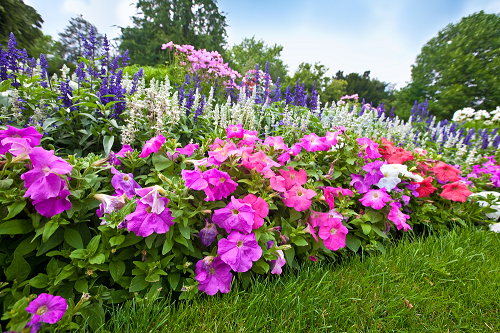
Purples and yellows are very popular variations when it comes to monochromatic flower bed ideas.
With a purple monochromatic flower bed, you have a lot of beautiful flowers to choose from: lavender, sage, leather flower, hydrangea, and grape hyacinth. A walkway lined with lavender can be absolutely breathtaking.
A yellow color scheme is also a popular choice for monochromatic gardens. Yellow gardens let you blend in deep golden hues with paler flowers with an almost buttery accent.
The Denver Daisy – a.k.a., Black-eyed Susan – and marigolds are great for adding deeper shades of yellow to a backdrop of a more mellow flower like the annual nasturtium.
Keep in mind that blues, whites, and violet flowers will have a more calming effect in your garden whereas warmer colors like red and yellow can create instant excitment!
Dichromatic and Ombre Flower Bed Ideas
Dichromatic means two colors wheras ombre is a French word that means you’re going to be using a blend of colors that gradually blend in to each other.
If you only want to use two colors, with varying shades of each color, then you probably want to look into a dichromatic garden. You’ll also want to consider using contrasting yet complementery colors to create the most powerful aesthetic look.
If you’re feeling more adventurous, then an ombre flower bed might be the way to go. Ombre flower beds typically blend some of the cool hues and warm hues discussed above to gradually blend in flowers with a lighter hue with dark hues.
An ombre flower bed typically starts off with a walkway made of flowers of a cooler, softer hue so that the eye gradually gets more and more captivated with the darker tones at the back of the garden.
Wheelbarrow Flower Garden
Sometimes called wheelbarrow planters, a wheelbarrow flower garden can be made using a wheelbarrow that’s rusted-out, cracked, or has a broken wheel.
The wheelbarrow, though, should have holes in the bottom to allow excess water to drain out. The big benefit to a wheelbarrow flower garden is that you can move it to an area with more sunlight.
Walkway Flower Beds
As alluded to above, a walkway flower bed can be a wonderful segue into a captivating garden or a landscaping effect all its own.
Millions of homeowners have already beautified their homes with a walkway flower bed culminating with their front door.
Walkway flower beds actually touch on a difference with gardens in general – a walkway flower bed would be an example of a formal garden path with right angles and straight lines.
That said, a walkway flower bed could open up into an informal pathway kind of garden (the second type) where you would have a meandering or curved path. A crescent-moon type of garden in the front yard would be an example of this second type.
Which flower bed ideas appeal to you most? Contact us for more information.
Lawn Maintenance: The Importance of Lawn Treatments
If you love your lawn (which we are sure you do), then you know the importance of lawn care and that it goes beyond watering and mowing. Yes, these two are the foundation for a healthy lawn, but lawn maintenance is a complex science, involving feeding, aeration, and controlling insects and weeds.
Benefits of Lawn Treatment

Proper lawn care ensures that your lawn can withstand threats from lawn-damaging weeds and insects. It also ascertains that your flowers, grass, and shrubs can fight-off diseases. Furthermore, lawn care ensures your turf can survive unpredictable weather and guarantees your lawn is ever nutrient rich.
However, seeing as it is time-consuming and a difficult undertaking, we recommend you engage professionals. Here are five benefits of hiring experts.
- Expertise
You might be a proficient landscaper, but there is knowledge and services only professionals can provide. They understand the shrubs and trees better and know the different grass varieties. They can often tell what is ailing your greenery in an instant and prescribe the best treatment program. Moreover, seeing as they understand the local climate, and have years of experience, they will engage in preventive measures to ensure your lawn can ward off seasonal pests and diseases.
- Avoid Accidental Damage
64% of American believe that all grass should be fertilized during spring while another 57% believe a lawn is not healthy if it is not green. These are false believes that lead to damage by over-fertilizing and leading to a high accumulation of salts in the soil.
Lawn treatment services, on the other hand, avoid common mistakes know how to treat your plants.
- Cost Effective
It might sound counterintuitive, but engaging professionals is cost-effective. Think about it; you will have to invest in equipment such as mowers, aerators, and brush cutters, invest in chemicals, and fertilizers. Furthermore, given that there is a period of trial and error, there is a high likelihood that you will be paying to correct mistakes.
However, with professionals, you will not pay to correct mistakes, and you don’t have to invest in the equipment and chemicals.
- Property Value
If you are considering putting your house on the market, you can increase its value by proper lawn treatment. Lawn maintenance can increase the value of your property by up to 15%. Who wouldn’t like that?
Hiring lawn care experts is the only indisputable way to ensure that your lawn is always in pristine condition.
- Consistency
As a homeowner, there is a likelihood that work, plus maintaining your lawn can be overwhelming. It will be challenging to create let alone observe an effective lawn care routine.
However, lawn maintenance experts ensure that your greenery, is trimmed, fed, and watered consistently. They also handle far more, and the result is a healthy lawn, and one that you can enjoy.
Conclusion
Though it is a demanding task, lawn treatment is of utmost importance. It improves air quality while maintaining the aesthetics of your home. Engaging the services of a professional ensures that your lawn is ever impeccable, it saves you money, and keeps you from physical labor. You can contact us for all your lawn maintenance, repair, and landscape design needs.
Determining the Right Time to Mulch
DLaying mulch not only improves the appearance of your landscape but it also has several other benefits. It minimizes weed growth and helps moisture retention, hence making your plants stay strong and healthy. It also acts as a good insulator thus regulating temperatures depending on the season. You can also curb soil erosion and plant damage during mowing through mulching. As mulching material decay, it adds nutrients to the soil.
Right mulching time
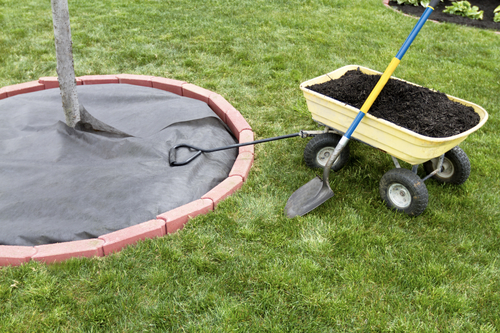
Knowing the right time to mulch will help you enjoy all the benefits that comes with the exercise. Many people have the tendency of mulching as soon as the spring sets since it’s one way to improve the appearance of the landscape. However, mulching as soon as the warm season starts is not advisable. You need to give the soil some time to acquire warmth, hence making mid-to late spring the right mulching time. If you had laid winter mulch, pull it off gradually to help the plants adapt to the warmth. Pulling it all at one can subject the plants to late-season cold.
How much mulch should you lay?
It is advisable you start by laying a thin layer of mulching material so as to give your seedlings the space to grow. As the plants get established, you can increase mulching material accordingly. You should put more mulch during summer to help retain soil moisture and provide insulation from cold during winter.
Determining the right amount of mulching material can be tricky. This is because you don’t want to lay too little material that you leave the plants exposed or too much that it kills the plants. You can determine the right amount depending on the type of mulching material you want to use. If you are using a fine material, then 1 to 2 inch layer should be fine, when 3 to 4 inch should be fine when laying coarse material. If your intentions are to prevent anything from growing in an area, then you can lay as much material as you want.
Laying too much mulching material results in the plant roots growing with the material hence a shallow rooting system. This makes your plants susceptible to damage by drought and cold weather. You can avoid this by putting a moderate layer depending on the type of your crops. When mulching an area with trees, you need to leave a space between the tree trunks and stem so as to prevent them from rotting. Leaving space also ensures that pests such as slugs and mice don’t get a habitat or destroy your plants.
When putting mulch, you need to put in consideration the style of the area. For instance, if it is the pathway, a windy area, or a slope hence susceptible to erosion, you should put heavy mulching materials. The size of the mulching material should also help you determine the depth of the layer. If you are using big chunks, then the layer should be deep, but if you are using small material, then the layer should be shallow. Contact us for more information.





